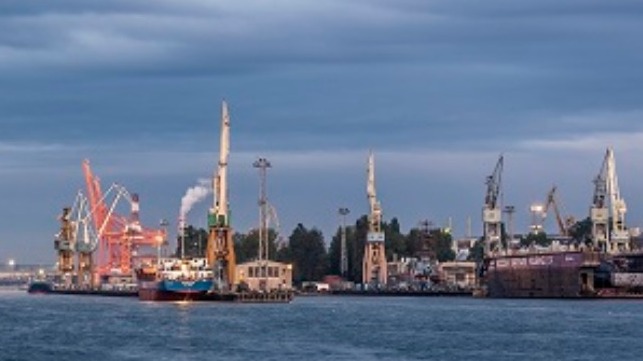Swedish Researchers Highlight Toxicity of Scrubber Discharge in Ports

A new study from Chalmers University of Technology, Sweden, adds to the growing calls for stricter regulations on the discharge from exhaust scrubbers with the researchers writing that when considered as part of the combined emissions of metals and environmental hazards, the risk increases greatly to the marine environment. The content that traditional environmental risk assessment (ERA) of emissions from shipping are based on one source at a time, but when they calculated the contaminant load in the overall emissions in four port environments, discharges from ships’ scrubbers, accounted for more than 90 percent of the contaminants.
“A single ship is responsible for many different types of emissions. These include greywater and blackwater, meaning discharges from showers, toilets, and drains, antifouling paint, and scrubber discharge water. That is why it’s important to look at the cumulative environmental risk in ports,” said Anna Lunde Hermansson who, with colleagues Ida-Maja Hassellöv and Erik Ytreberg, authored the new study that looked at emissions from shipping from a cumulative perspective.
They point to the rapid adoption of scrubbers as a means to meet the increased emission standards in Northern Europe and the Baltic region and the continuing use of heavy fuel oil by many ships. They highlight the concern that the water not only takes up the sulfur from the exhaust gases, leading to acidification of the scrubber water but also other contaminants such as heavy metals and toxic organic compounds before the water is pumped into the sea.
“There is no cleaning step in between – so up to several hundred cubic meters of heavily contaminated water can be pumped out every hour from a single ship. Although new guidelines for ERAs of scrubber discharges are in progress, the ERAs still only assess one source of emissions at a time, which means that the overall assessment of the environmental risk is inadequate,” said Lunde Hermansson.
The researchers looked at four different types of port environments to determine contaminant concentrations from five different sources. Among the data they uses were the ports of Copenhagen and Gdynia due to high volumes of shipping traffic, and a substantial proportion of these ships having scrubbers.
The results of their research showed that the cumulative risk levels in the ports were, respectively, five and thirteen times higher than the limit that defines acceptable risk. The researchers contend that three out of the four port environments were prone to unacceptable risks according to the assessment model used.
They contend that the only port environment that showed an acceptable risk in the researchers’ ERA was the model with the highest water exchange per tidal period, meaning that a high volume of water is exchanged in the port as the tide moves in and out.
More than 90 percent of the environmentally hazardous metals and PAHs (polycyclic aromatic hydrocarbons) came from scrubber discharge water, they contend. They also saw that it was emissions from antifouling paint and scrubber discharge water that accounted for the highest levels of hazardous substances in the marine environment and had the highest contribution to the risk. Antifouling paints they report accounted for the biggest load of copper and zinc.
“The results speak for themselves. Stricter regulation of discharge water from scrubbers is crucial to reduce the deterioration of the marine environment,” said Anna Lunde Hermansson, a doctoral student at the Department of Mechanics and Maritime Sciences at Chalmers.
They highlight that the Swedish Agency for Marine and Water Management and the Swedish Transport Agency have submitted a proposal to the Swedish Government to prohibit the discharge of scrubber water into internal waters within the Swedish archipelago. While calling this a step in the right direction, they would also like to see a stronger ban that extends across larger marine areas.
The article “Cumulative environmental risk assessment of metals and polycyclic aromatic hydrocarbons from ship activities in ports” was published in the journal Marine Pollution Bulletin. The authors are working at the Department of Mechanics and Maritime Sciences at Chalmers and were joined by a researcher from the Finnish Meteorological Institute. The research was partly funded by the EU project EMERGE within the framework of the Horizon 2020 funding program.
